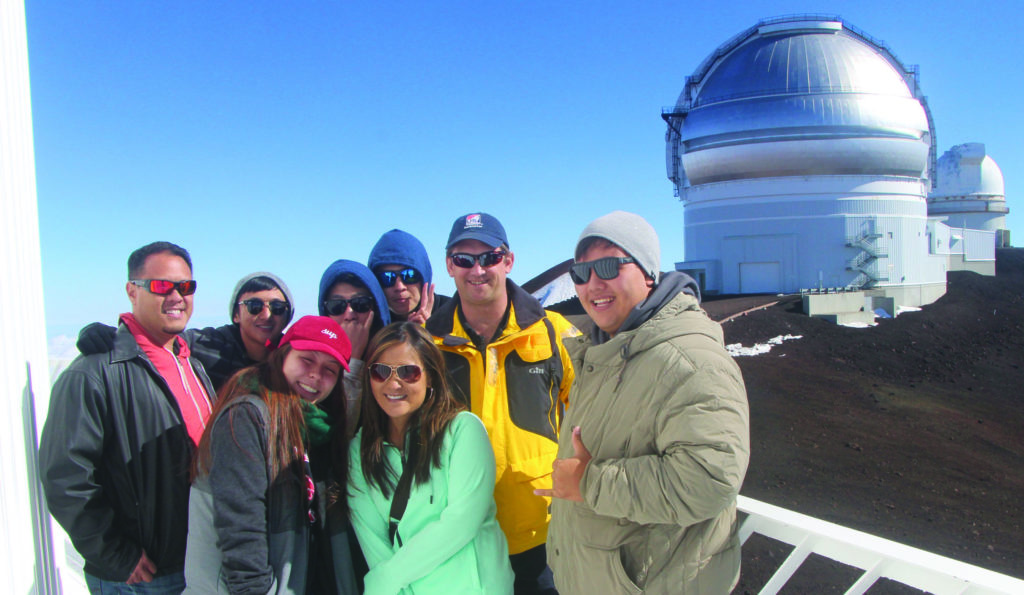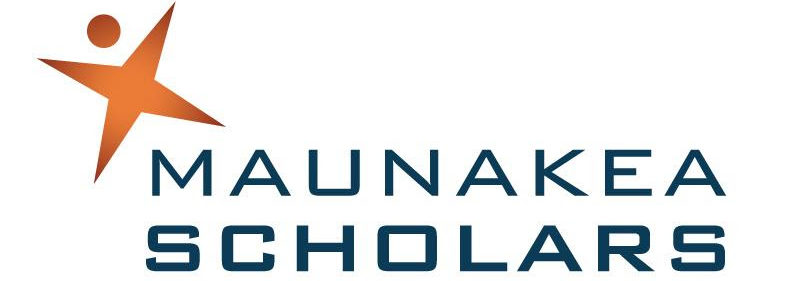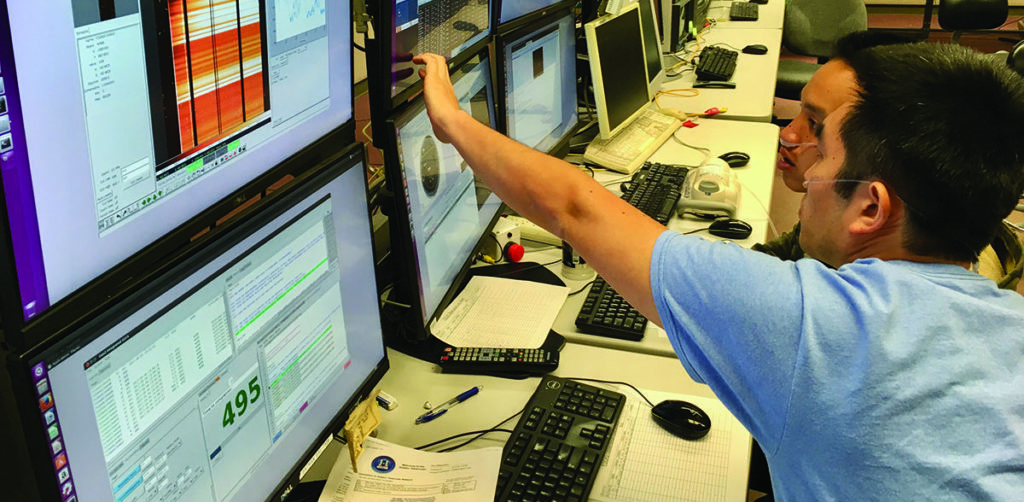Nuturing Hawai‘i’s Future Astronomers
At 13,803 feet, the summit of Maunakea on Hawai‘i Island provides one of the best locations in the world for ground-based astronomy due to its high elevation and clean, relatively turbulent-free air. Each night, giant dome doors on the observatories open to allow powerful telescopes to capture distant images from the far reaches of space. Supernovas, quasars, nebulae, and other astronomical wonders all come into sharp focus for the observer.
While these observers are often national and international astronomers a select group of Hawai‘i high school students, known as the Maunakea Scholars, are also getting “telescope time” for their research projects. They work alongside skilled astronomy mentors, predominately University of Hawai‘i at Mānoa Institute for Astronomy graduate students to create and execute sophisticated observing proposals.
“The Maunakea Scholars program is an innovative approach to bring Hawai‘i’s aspiring young astronomers into the observatory community, competitively allocating observing time on world-class telescopes to local high school students,” said Mary Beth Laychak, outreach manager for the Canada-France-Hawai‘i Telescope (CFHT). “This is the first program of its kind internationally, leveraging the most powerful collection of telescopes in the world for the direct educational advancement of Hawai‘i’s high school students.”
According to Laychak, future plans for this program include—
- Expanding its scope to include all public high schools in the state
- Advancing partnerships with the Hawai‘i State Department of Education, the University of Hawai‘i and other education leaders
- Offering new cultural curricula within the program
- Establishing a lasting educational opportunity for Hawai‘i’s students that reflects unique dimensions of Hawai‘i in the 21st century
The program was first developed through discussions between CFHT, Gemini Observatory and teachers in East Hawai‘i Island in 2014 and was officially rolled out the following year. The Maunakea Scholars program now includes 10 high schools across four islands, including: Nanakuli, Kapolei, Waipahu and Kalani on O‘ahu, King Kekaulike on Maui, Moloka‘i High School on Moloka‘i and Kohala, Honokaa, Kealakehe and Waiakea on Hawai‘i Island.

“It was seen as a means of inverting the paradigm—to bring the observatories to students, instead of students trying to find their way to mentors and opportunities within the observatories,” said CFHT Director Doug Simons. “We knew there was interest from high school students in the observatories and designed a program that we thought would spark that interest further—by giving them access to the same telescopes professional astronomers have been using for years.”
Access to observing time is crucial to the program and to launch the program during its pilot year CFHT provided a night of observing time that was shared by the inaugural Maunakea Scholars cohort. The program’s first year success eventually led to all of the Maunakea Observatories providing in-kind observing time to the program this year—with additional access to the Las Cumbres Observatory on Haleakalā, Maui and Kitt Peak in Arizona.
Under the program, student proposals are reviewed by a team of astronomers and scored based upon scientific merit, creativity and technical feasibility. Proposals awarded observing time are matched to telescopes and instruments ideally suited to each research project. Students selected to receive observing time are recognized during an awards ceremony at each participating school, which is often attended by teachers, parents, principals and complex area superintendents. All students who participate in the program get an opportunity to visit the summit of Maunakea and see one or more telescopes. Students receiving CFHT observing time often visit CFHT’s Waimea headquarters for a night of remote observing in the telescope control room, watching their data steam live from the summit.
In May 2017, leaders from the University of Hawai‘i, Hawai‘i State Department of Education, and Maunakea Observatories declared their commitment to this program by creating an educational partnership to commit resources to the program and to develop a working group to further develop and advance the program. The Institute for Astronomy provides most of the program’s mentors, the Department of Education provides links to teachers, schools and curricula statewide, and the Maunakea Observatories provide observing time, summit access/tours, infrastructure, funding and overall coordination of the program.
“The observatories on Maunakea are the best in the world,” said University of Hawai‘i President David Lassner. “The Maunakea Scholars program provides some of our best high school students with an unprecedented opportunity to conduct real research—and lays the groundwork for us to grow the next generation of world-class astronomers here at home.”

Samples of Proposals Awarded Observing Time
ECLIPSING X-RAY BINARY SYSTEM
Amber Nakata
Nanakuli High School
COMPARING ELEMENTS IN DIFFERENT SUPERNOVA REMNANTS
Ashlyn Takamiya
and Justin Fernando
Kapolei High School
STAR FORMING REGIONS AND HOW THEY RETAIN THEIR SHAPES
Spencer Young
Kalani High School
DARK NEBULA AND THEIR CONNECTION TO STAR FORMATION
Hoku Sanchez and
Keilani Steele
Honokaa High School
QUASARS AND WHAT THEY ARE MADE OF
Jamie Valdez and David Zerba
Kapolei High School

